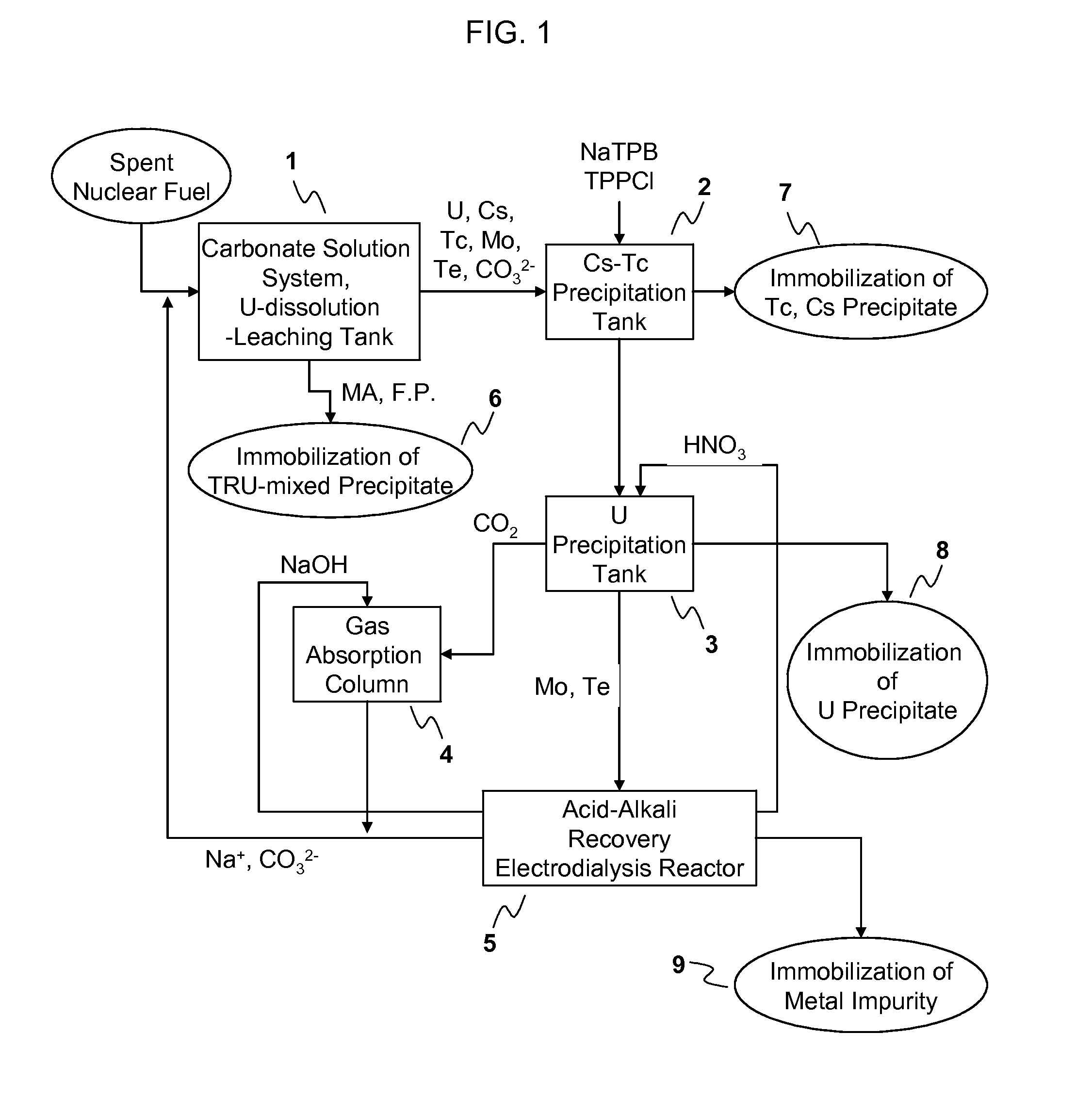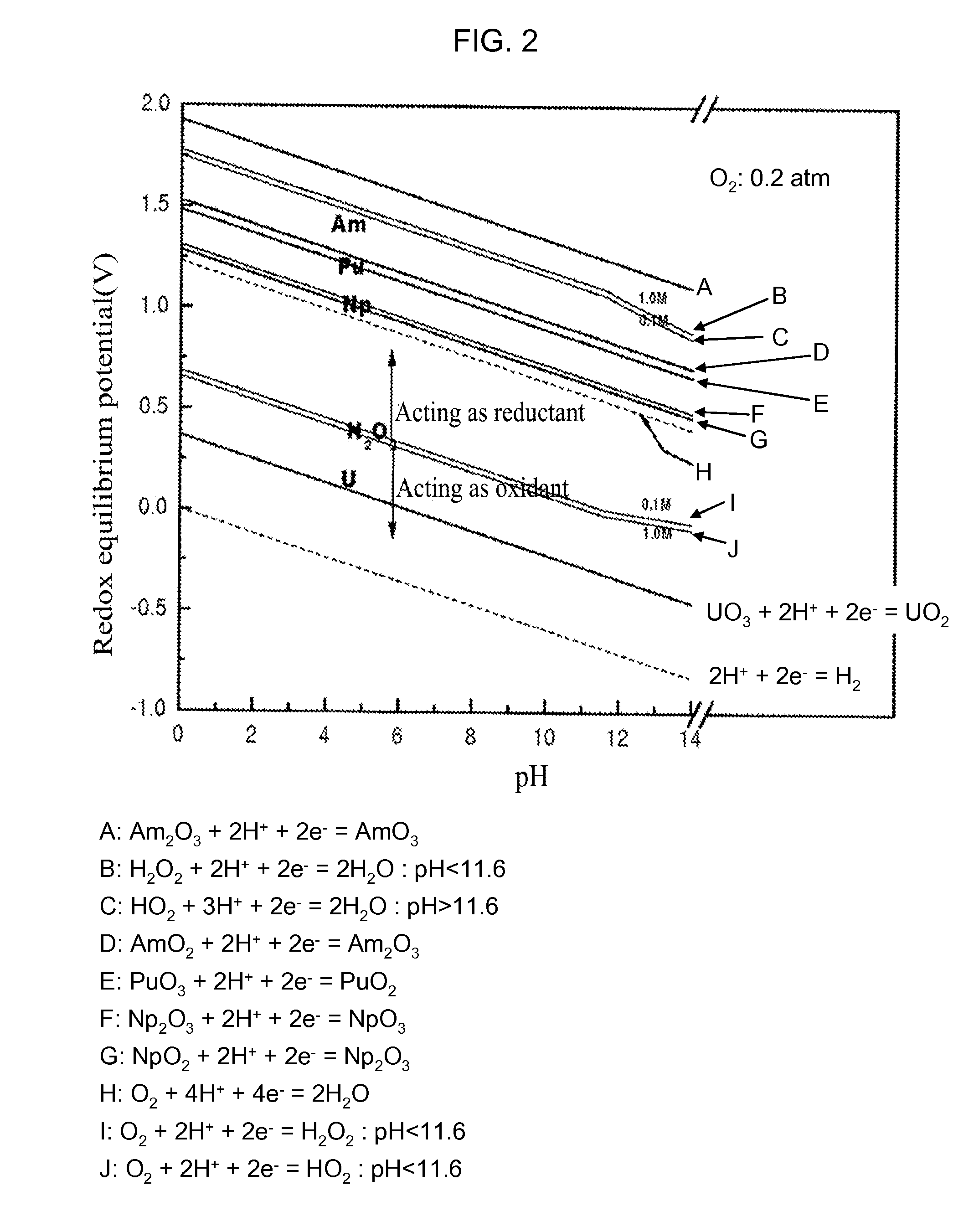Process for Recovering Isolated Uranium From Spent Nuclear Fuel Using a Highly Alkaline Carbonate Solution
a technology of alkaline carbonate and uranium, which is applied in the direction of crystal growth process, alkali metal halide purification, dissolving, etc., can solve the problems of high waste, lack of practical technologies, and critical defect of purex proliferation resistance, so as to facilitate the separation of pu and enhance proliferation resistance , the effect of minimizing waste generation
- Summary
- Abstract
- Description
- Claims
- Application Information
AI Technical Summary
Benefits of technology
Problems solved by technology
Method used
Image
Examples
Embodiment Construction
[0051]This specification discloses one or more embodiments that incorporate the features of this invention. The disclosed embodiment(s) merely exemplify the invention. The scope of the invention is not limited to the disclosed embodiment(s). The invention is defined by the claims appended hereto.
[0052]References to spatial descriptions (e.g., “above,”“below,”“up,”“down,”“top,”“bottom,” etc.) made herein are for purposes of description and illustration only, and should be interpreted as non-limiting upon the methods of the present invention, and catalysts prepared therefrom, and any products prepared using the catalysts, which can be spatially arranged in any orientation or manner.
[0053]A process for recovery of uranium (U) in a spent nuclear fuel according to the present invention comprises: using a carbonate solution having H2O2 as an oxidant to sediment or precipitate TRU nuclides and other fission products contained in the spent nuclear fuel in the forms of insoluble residues and...
PUM
| Property | Measurement | Unit |
|---|---|---|
| Molar density | aaaaa | aaaaa |
| Molar density | aaaaa | aaaaa |
| Molar density | aaaaa | aaaaa |
Abstract
Description
Claims
Application Information
 Login to View More
Login to View More - R&D
- Intellectual Property
- Life Sciences
- Materials
- Tech Scout
- Unparalleled Data Quality
- Higher Quality Content
- 60% Fewer Hallucinations
Browse by: Latest US Patents, China's latest patents, Technical Efficacy Thesaurus, Application Domain, Technology Topic, Popular Technical Reports.
© 2025 PatSnap. All rights reserved.Legal|Privacy policy|Modern Slavery Act Transparency Statement|Sitemap|About US| Contact US: help@patsnap.com



